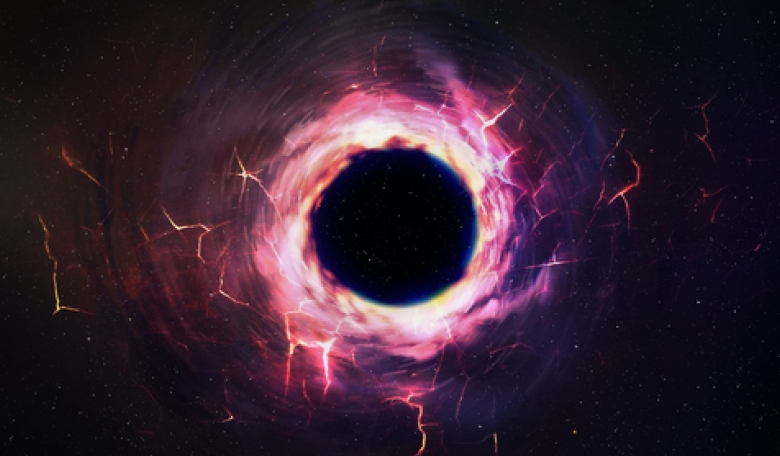After 26 years of
observation, ESO's Very Large Telescope in Chile has revealed the
effects predicted by Einstein’s general relativity theory on a star
passing near the supermassive black hole in the Milky Way galaxy.
This supermassive black hole, the closest to the Earth at
26000 light-years away, is surrounded by a group of stars orbiting it
at high speed. The resulting gravitational field, the strongest in
the Milky Way galaxy, creates the ideal environment for testing
Einstein's general theory of relativity. One of these stars, S2, was
less than 20 billion kilometers the black hole in May of this year,
which allowed astronomers to use ESO's Very Large Telescope's
instruments (GRAVITY, SINFONI and NACO) to make new infrared
observations. The international team, led by Reinhard Genzel of the
Max Planck Institute for Extraterrestrial Physics (Garching,
Germany), compared the position and velocity measurements with
predictions of Newtonian gravity, general relativity and other
gravity theories. The results, a culmination of 26 years of ESO
observations of the center of the Milky Way galaxy, showed an
inconsistency with Newtonian predictions but supported those of
general relativity theory.
“This is the second time that we
have observed the close passage of S2 around the black hole in our
galactic centre. But this time, because of much improved
instrumentation, we were able to observe the star with unprecedented
resolution,” explains Genzel. “We have been preparing intensely
for this event over several years, as we wanted to make the most of
this unique opportunity to observe general relativistic effects.”
According to Frank Eisenhauer (MPE), Principal Investigator of GRAVITY and the SINFONI spectrograph, “The first observations of S2 with GRAVITY, about two years ago, already showed that we would have the ideal black hole laboratory. During the close passage, we could even detect the faint glow around the black hole on most of the images, which allowed us to precisely follow the star on its orbit, ultimately leading to the detection of the gravitational redshift in the spectrum of S2.”
The team used SINFONI to measure the velocity of S2 towards and away from Earth and the GRAVITY instrument in the VLT Interferometer (VLTI) to make previously unheard of precise measurements of the changing position of S2 in order to define the shape of its orbit. As the black hole's strong gravitational field stretched the light from the star to longer wavelengths, the changes in wavelengths corresponded to those predicted by Einstein’s theory of general relativity.











